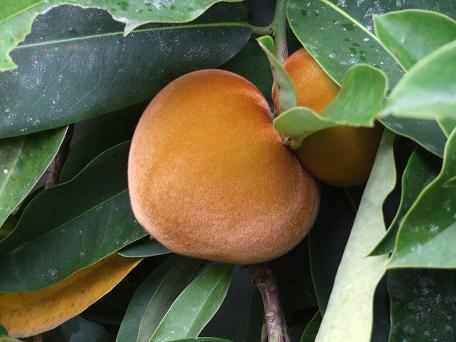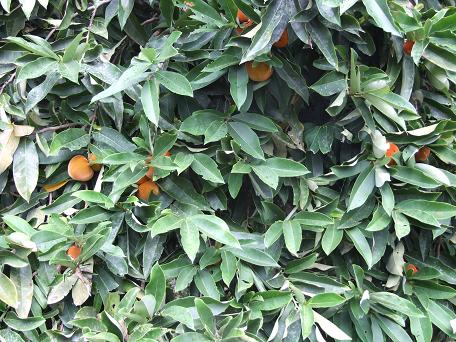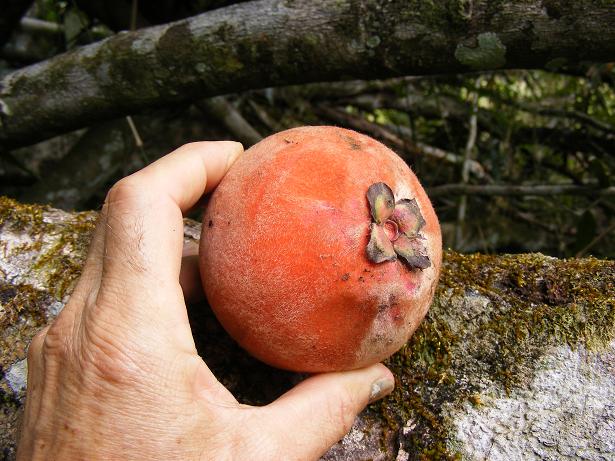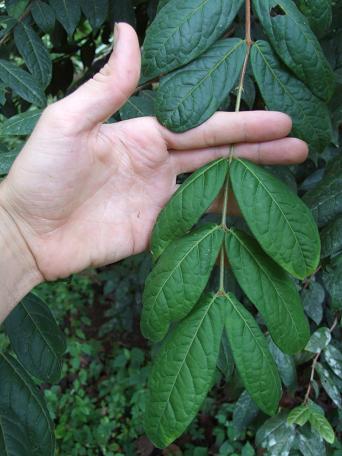Note: This is a portion of an essay I wrote a number of years ago (in 2007) and is best read in conjunction with two additional articles I have posted on this site: Chinampa: Raised-Bed Hydrological Agriculture and The Domesticated Landscapes of Los Llanos de Moxos, Bolivia.
Complex Agroforestry and the Built Environment
By Spencer Woodard
2006 – 2007
Agroforestry is currently receiving considerable attention as a stable and ecologically viable form of tropical forest land use (Alcorn, 1984; Budowski, 1981; Hart; 1988; King & Chandler, 1978; Salas, 1979; Spureon, 1980; Weaver, 1979; Denevan, 1987). Traditional forest farming techniques provide us with one of the most logical and effective models of intelligent land management. Recent studies have demonstrated that some of the most successful food-producing adaptations to rainforest environments have been those of indigenous people (Erickson 2005; Heckenberger et al 2007; McNeely 2004; Miller & Nair 2006). These complex systems were developed and refined over thousands of years and, although now in peril of destruction and disappearance, they can still provide us with insight into how we can properly and sustainably manage our soils, water, crops, animals, pests and so forth (Thrupp 1998; Altieri 1999; McNeely 2004). In order to properly go about studying these historical systems we must understand their features through a variety of disciplines. Furthermore, we must begin to put information into practice that is extracted through experimentation and field research.
Historically conservationists have focused their attention on protecting ‘natural’ forests, these include landscapes which are understood as existing in a ‘pristine,’ ‘virgin,’ or ‘primary,’ state and deemed as such based on the idea that they have suffered from little or no direct human impact. However, there exists a rapidly accumulating body of evidence to support the view that very few of today’s forests, anywhere on earth, can be considered to truly exist in such a state (McNeely 2004). Not only do studies suggest that large portions of the neo-tropical forest landscapes of the Americas are anthropogenic, but that biodiversity in these anthropogenic areas is now equal to if not higher than areas which were not inhabited by large pre-Colombian societies (Erickson 2005; Atta-Krah et al. 2004; McNeely 2004).
Western society has fabricated a romantic, mythical vision of the untouched wilderness and the dominant conceptions of pre-Colombian native peoples that dwelled within these environments – small, idealized populations of semi-nomadic humans whose impact on the earth’s landscape was invisible or non existent. Despite the many misconceptions, there exists more than ample irrefutable evidence demonstrating how, up until the end of the fifteenth century, the Americas supported dense human populations which substantially altered the forest and topography in ways that proved beneficial to both human and non human life-forms (Heckenberger et al. 2003; McNeely 2004; Denevan 1967, 1992, 2001; Erickson 2005). McNeely argues that “the Western vision of an untouched wilderness has permeated global policies and politics in resource management. This view of forests is based on an outmoded ecological perspective, and on misunderstanding of the historical relationship between people and forests, and the role people have played in maintaining biodiversity in forested habitats.” It is important that modern peoples begin to understand that much of the older vegetation throughout the world is the legacy of past civilizations; managed agroforests that were abandoned hundreds of years ago during various waves an periods of colonial onslaught. Although this paper will focus on the tropics of the Americas, McNeely goes further, with examples from Asia, the western hemisphere, Europe and the Mediterranean, to demonstrate that cycles of human activity have affected biodiversity in forests worldwide (McNeely 2004: 157-160).
Perhaps one the most noteworthy reasons why early Europeans did not detect the presence of extensive, highly diversified land management and resource renewal techniques employed by native populations of the Americas was because indigenous systems were so masterfully executed; the artificiality of the built environments totally eluded the unobservant foreigners. One culture’s masterful creation was perceived merely as wild nature in dire need of “taming” to the newly arrived other. The first Spanish visitors would not have understood any other approach to land management and food production distinct from those employed in Europe at the time. So Mesoamerican Indians were seen and portrayed as hunter/gather primitives who had not yet “discovered” plant and animal domestication. In reality, as I will continue to stress throughout relevant discussion, in terms of logic, efficiency, renewability and productivity, pre–Colombian populations of the Americas practiced a refined and far superior agricultural technology which reached far beyond the faulty models that existed (and have persisted) throughout Europe at the time.
The indigenous approach operated at an altogether elevated degree of sophistication in terms of management and functionality, working towards both societal and ecological sustainability under the precept that you can’t have one without the other. Hundreds of species of edible, medicinal and other useful plants and animals existed within large tracts of built forest, all constructed, managed and harvested by local populations. In his recent book, 1491: new revelations of the Americas before Columbus, author Charles Mann recounts a conversation with anthropological botanist Charles Clement, from the Brazilian National Institute for Amazon Research. In one brief but impacting statement Clement says, “Visitors are always amazed that you can walk in the forest here and constantly pick fruit from trees, that’s because people planted them. They’re walking through old orchards” (Mann 2006, 343).
Planting, managing and harvesting their forest gardens over thousands of years the first Amazonians slowly transformed large swaths of natural forests into something more useful, something that would function as undomesticated nature had, as a stratified, self-sustained forest ecosystem, providing habitat for native flora and fauna, yet the customized forest would also provide a wealth of products necessary for human existence.
“Swidden-Fallow” agroforestry describes a traditional method of modifying and managing forest environments on a larger scale as is still widely practiced throughout the Amazonia. Balee (1994: 116-165) describes this practice of forest management as, “the manipulation of inorganic and organic components of the environment that involves direct and indirect human interferences in species populations distribution and behavior… some species may become locally extinct, but there may be an increase in the overall ecological and biological diversity.” It is worth pointing out that, due to lack of research, the highly productive method of swidden-fallow forest/food system management has seldom been commented on in the literature on shifting cultivation (Harris 1971: 482; Denevan 2001: 83).
The swidden-fallow process can be summarized as follows: A plot of forest is selected and surveyed, valuable, or desirable species occurring naturally in the area are identified and left in the area, all other undesirable species (of shrub, vine, tree, etc.) are removed. All biomass from felled vegetation is either left to slowly decompose providing nutrients and suppressing weeds, or it is burned for nutrients in the ash. Void spaces left by eliminated species are filled in with food, medicine, or other useful crops. Based on growth-rate, eventual size, and overall growth habits of the newly implemented plants and trees, plantations are made so as to mimic natural, stratified tropical forest design. Then the swidden site is left to fallow. In the time between a new planting and maturation of tree crops a swidden site can be intensively cultivated with annuals and perennials. Once young trees have developed a substantial canopy leaving the under-story with insufficient light to be cultivated with perennial crops, the site is left to mature and self-regulate while being harvested by humans on a regular basis. Thus an anthropogenic forest is created. If one is familiar with the concept of “slash and burn”, a more commonly discussed form of shifting cultivation, swidden-fallow might be understood as a similar approach, but with a greater degree of complexity and a heightened potential for longer-term, restorative agricultural.
“Fallow management involves both purposeful and unintended human manipulation of both individual plants and groups of plants, both wild and domesticated or semi-domesticated” (Denevan 2001: 84). In the first ten to twelve years a fallow is managed most actively and intensively where as older fallows require less management although they can be harvested for thirty-five years or more. It is common that old, unproductive fallow sites are remodeled and replanted to become young swidden once again, this way forests are replenished and selectively propagated, constantly maintained at their optimal productive capacity. Denevan (2001) reports that in contemporary intensive swidden systems the cropping to fallow ratio is high, one to three years of intensive cropping followed by twenty or more years of fallow. Denevan has concluded that high ratios of cropping (swidden) to fallow are probably not indicative of prehistoric methods rather, in other words, cycles of cropping and fallowing were more balanced out (Denevan, 2001: 68). De Jong (1996) reports that farmers in the Peruvian lowland Amazon today do not continue the intensive use (cropping) of a fallow site for more than four years because of decreasing returns and increasing weed invasion make it less profitable than changing the field to a forest garden and make a new swidden elsewhere. Older fallows (forest gardens) require less human input than intensively cultivated swidden, but continue to be economically important (De Jong 1996).
One of the major reasons why the swidden-fallow method was developed by peoples living in various tropical regions around the world relates to the extremely poor condition of rainforest soils. Fallowing land after intensive cropping is one of the most basic and assured ways of restoring soil fertility; vegetation returns regenerating depleted nutrients.
Even today, out of all known domesticated plants in the Amazon, more than half are trees. (Depending on the definition of “domesticated” the figure could be as high as eighty percent). In the region inhabited by the Ka’apor, centuries of selective propagation through swidden-fallow cultivation and management have profoundly changed the forest community. Ka’apor-managed forests hold plant inventories of which almost half are used by humans for food, remaining species hold equally important value, as medicine, timber, etc. In similar forests that have not recently been managed, the figure is only 20 percent (Mann 2006: 343). Balee has estimated that at least 11.8 percent, about an eighth, of the nonflooded Amazon forest is “anthropogenic”, directly or indirectly created by humans. Many researchers today regard this figure as conservative, some will even go so far as to suggest that all neotropical forests were designed, constructed and managed over thousands of years by indigenous inhabitants. Clark Erickson maintains that most, if not all neotripical landscapes are built environments and that the lowland tropical forests of South America are among the finest works of art on the planet (Mann: 343-344). Accordingly, Peter Stahl, an anthropologist at the State University of New York Binghamton, maintains that “lots” of researchers, including himself, believe that “what the eco-imagery would like to picture as a pristine, untouched “Urwelt” (primeval world) in fact has been managed by people for millennia” (Mann 2006: 344).
Today, indigenous forest management systems range greatly both in terms of scope and scale. There still exist groups of indigenous people, such as the Barasana Indians of the Colombian Amazon, who can identify every tree species (exceeding three hundred) in their territory without having to refer to the fruit or flowers. It is not uncommon that an Amazonian tribe will use more than 100 species for medicinal purposes alone (Plotkin, 2003: 147-155). Among mestizo populations in more developed areas a family may own and manage one or a few fallowing fields which are intermittently renewed through selective removal and renewal of desired species. Smaller, more domesticate models may be found functioning as house gardens where they receive more intensive management. Home gardens are usually highly complex mixtures of perennials and annuals, medicinal, ornamental, fuel, and artisanal species. Fertility in home garden systems is maintained by decomposing plant matter, ash from cooking fires, biodegradable garbage and human and animal waste. Larger anthropogenic forests, such as those of the Barasana, among others, tend to be further removed, surrounding communal house sites. In some instances fallow sites are harvested which lie at a great distance from residences (Denevan 2001: 66-71).
Contemporary Amazonian homegardens of both small and large scale, serving domestic and urban populations, combine useful native species with fruit trees introduced from other parts of the globe during European colonization, as well as more recent introductions. Smith (1996) reports that, in more rural areas, homegardens appear to be designed and utilized more for domestic supply of fruits, condiments, medicines, craft materials and shade rather than to be sold to a larger consumer market. However, near more densely populated areas agroforestry systems often become part of both subsistence and income-earning initiatives, mostly through the production of marketable fruit. Overall the use of homegarden products is for domestic consumption indicating that, from the point of view of food security, homegardens can be a valuable option for small-scale farmers regardless of their distance to markets. Instead of cultivating one or two edible species, en masse, as is practiced by modern farming methods, tree-based homegardens integrate a wide variety of valuable products, more than would be required to sustain a comfortable existence (Miller and Nair, 2006).
The indigenous approach to land and resource management differs in a few fundamental ways from those existing and promoted by the western world. Briefly, I will highlight a few significant advantages to the indigenous technique: In terms of both plant and animal populations they were far more diverse, by hundreds, if not thousands of times. Organization and complexity, the basic foundation behind the design of diverse agroforestry systems, mimics the composition of “natural” forest landscapes. Built forests are constructed on multiple “dimensions”, or levels; potentially incorporated are vines, shrubs, groundcovers, shade loving and full sun plants, bush fruits, hardwoods, crown bearers, and so on. All propagated plant species are intermixed with one another as they would be found in a mature forest; together they function in one large multi-lateral symbioses, or alliance. Although the established complex agroforestry system does not depend upon the human being, the human can interact in harvest, maintenance and propagation; through selective propagation one obtains superior genetics enhancing growth-rates and productivity.
Whitmore and Turner emphasize the many different patchworks of agricultural microsystems within built landscapes, in which “each elevation zone was attuned to small-scale environmental variation, furthering the ability to cultivate a wider diversity of products.” Through the implementation and mastery of this type of food/resource production model indigenous societies did not fail, as Europeans already had (at the time of the conquest), in producing ample food for dense populations while simultaneously maintaining a diversity of biological organisms and local ecosystems.
McNeely (2004) draws some conclusions concerning dominant patterns in the history of forests and biodiversity, which can be summarized as follows: The most significant fact to consider is that human beings have always been a dominant force in the evolution of today’s forests. Historically technological development and forest degradation have existed in a corollary relationship with one another – as technology becomes more and more sophisticated forests undergo a greater degree of modification and/or destruction. As overexploitation continues and resources dwindle, forest degradation becomes increasingly detrimental to human populations eventually leading to a forced cultural change which is manifested through a reduction of human pressure. Such changes in conditions will either result in regeneration of forests to highly productive and diverse systems, or it will result in permanently altered, less diverse and less productive landscapes. Historical and contemporary examples suggest that the best approach to conserving forests and their biodiversity is through a variety of management approaches ranging from strict protection to intensive use (McNeely 2004).
Based on the relationship between modern societies and forest ecosystems, the idea of “intensive use” conjures up images of abuse and eventual destruction; razing of forest and installation of industrial or commercial fixture. This is where we must begin to reevaluate alternative possibilities and methods of land use and management. Managing agroforestry systems to address biodiversity concerns will both enhance productivity and contribute to conservation objectives. Intensive use doesn’t necessarily have to imply abuse.
One of the major issues concerning contemporary methods of tropical forest utilization derives from the fact that modern forestry practices originated in Europe several hundred years ago and were developed for the purpose of managing temperate ecosystems with relatively few species on resilient mineral soils (Plotkin, 2003). Notwithstanding the many structural differences between temperate and tropical forests, European forestry methods have been encouraged in tropical regions of the world almost exclusively for the removal of timber. Timber extraction today requires the use of heavy machinery which causes great damage to fragile tropical soils, and, consequent to the great harm inflicted through the process of timber extraction, tropical forests have been utilized as nonrenewable resources, usually turned into crop or pasture land that serves only for a few years before it is totally depleted.
How can tropical forests be utilized for their many renewable resources in ways that will still generate some sort of economic return without causing disastrous outcomes? One relatively obvious solution would be to focus more attention on the many non-timber products occurring within tropical ecosystems, such as foods, medicines, oils, waxes, fibers, latexes, tannins, dyes, resins, natural pesticides, spices, and other non-wood products (Plotkin, 2003).
The most logical approach towards the realization of the potential value in non-timber products is through the science of ethnobotany, which includes the investigation and evaluation of the knowledge of all phases of plant life among primitive societies and of the effects of the vegetal environment upon the life, customs, beliefs, and histories of these peoples. Ethnobotany studies the “totality of the place of plants in a culture and the direct interaction by the people with the plants”, offering an effective approach to the conservation of tropical forests through the expansion of our comprehension of the value in tropical forests beyond mere hardwoods (Ford, 1987). With this expanded knowledge commodities might be extracted with minimal ecological damage while simultaneously providing incentive for the conservation and rational utilization of tropical forests (Plotkin, 2003).
The agroecological approach encompassed by the practice of complex agroforestry offers a practical method of managing forests and restoring agriculture lands that have been degraded through the abuse of modern agricultural systems. As history has proven, through proper design and management techniques, rainforests and other terrestrial environments can potentially sustain large, dense populations, intensive cultivation and environmental protection without suffering from depletion and eventual destruction. The adoption and reintegration of traditional methods into our modern infrastructure would introduce and encourage resource management practices that are not only productive and environmentally sound but could actually help to enhance and improve ecosystems and biodiversity.
— Spencer Woodard (2007)




